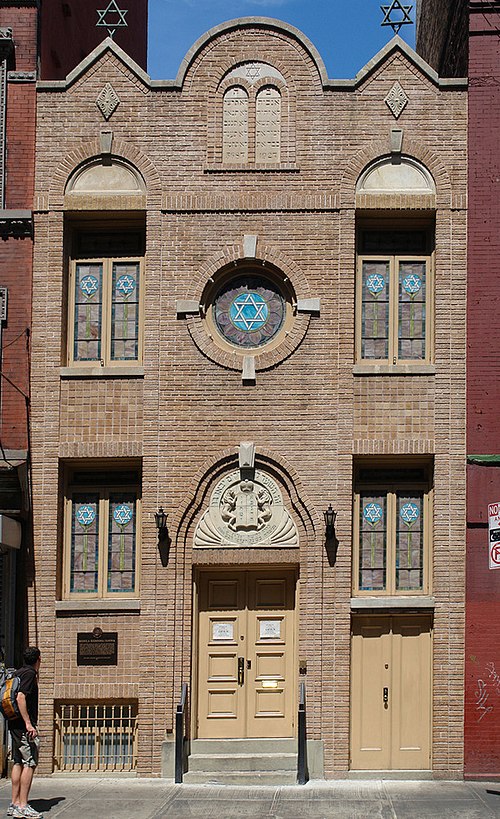| Kehila Kedosha Janina | |
|---|---|
 Kehila Kedosha Janina synagogue in 2007 | |
| Religion | |
| Affiliation | Judaism |
| Rite | Romaniote |
| Ecclesiastical or organizational status | Synagogue |
| Leadership | Lay led |
| Status | Active |
| Location | |
| Location | 280 Broome Street, Manhattan, New York City, New York |
| Country | United States |
Location in Lower Manhattan | |
| Coordinates | 40°43′7″N73°59′28″W / 40.71861°N 73.99111°W |
| Architecture | |
| Architect | Sydney Daub |
| Type | Synagogue |
| Style | |
| Established | 1906 (as a congregation) |
| Completed | 1927 |
| Specifications | |
| Width | 20 feet (6.1 m) |
| Materials | Brick; stone |
| Website | |
| kkjsm | |
Kehila Kedosha Janina Synagogue | |
 | |
| Area | less than one acre |
| NRHP reference No. | 99001430 |
| NYCL No. | 2143 |
| Significant dates | |
| Added to NRHP | November 30, 1999 |
| Designated NYCL | May 11, 2004 |
| [1] | |
Kehila Kedosha Janina (Holy Community of Janina) is a synagogue located at 280 Broome Street between Allen and Eldridge Streets on the Lower East Side of Manhattan, New York City, New York, United States.
Contents
The synagogue is the only Romaniote rite synagogue in the Western Hemisphere. Romaniote traditions are separate from those of both Sephardic and Ashkenazi Judaism, deriving their lineage in the Eastern Mediterranean for nearly 2000 years, long before the Spanish Inquisition. [2]
The building was built between 1925 and 1927 and was designed by Sydney Daub [3] in the Classical Revival and Moorish Revival styles. It was added to the National Register of Historic Places on November 30, 1999, and was designated a New York City Landmark on May 11, 2004. [2] After the city provided a $50,000 grant, the synagogue underwent a major restoration in 2006 [4] by architect Leonard Colchamiro, a descendant of one of the community's original founders. [5]


